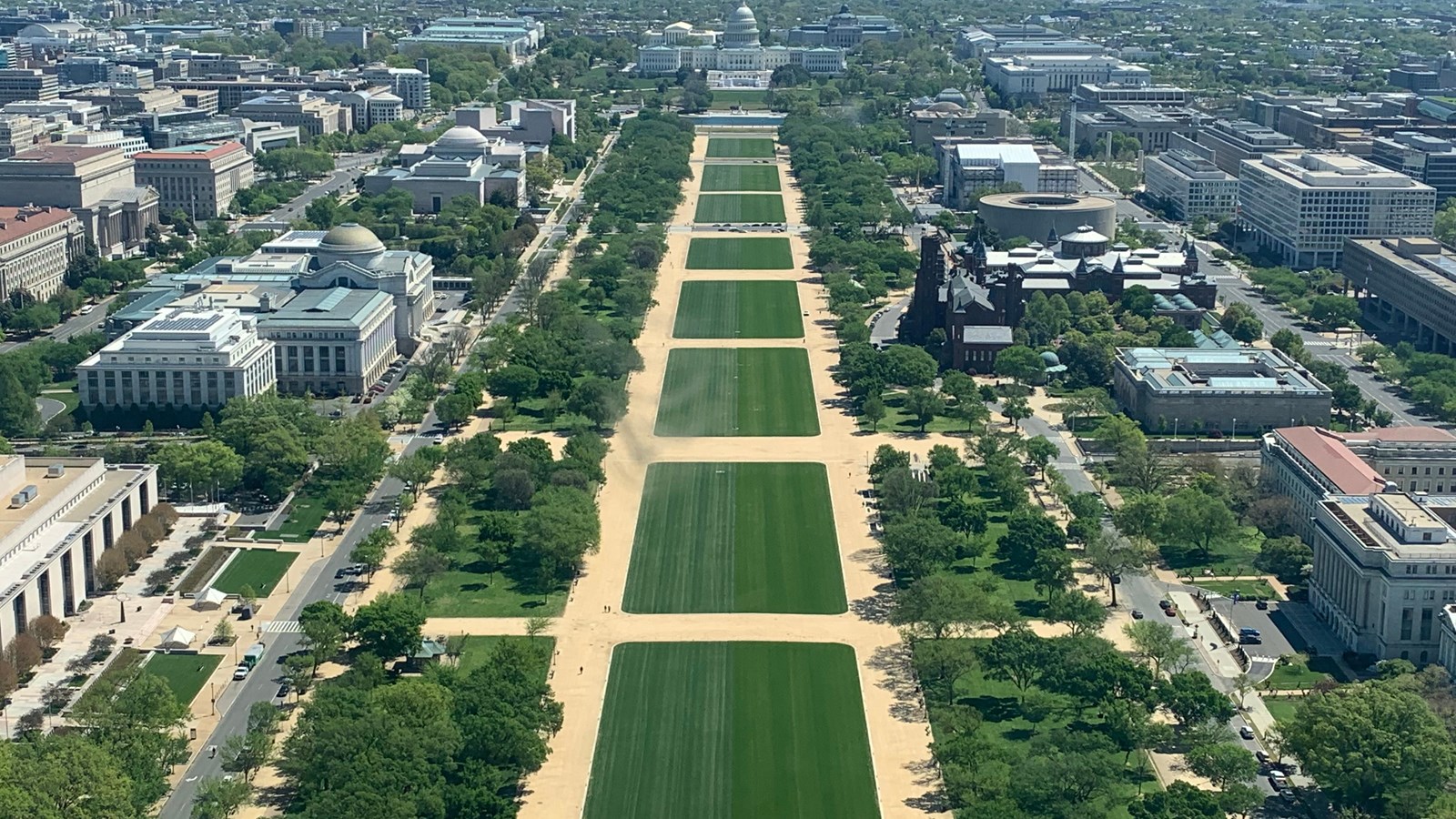Last updated: December 22, 2025
Place
The Mall

NPS photo, National Mall and Memorial Parks
Bicycle - Sharing Station, Bus/Shuttle Stop, Cellular Signal, Food/Drink - Ice Cream, Food/Drink - Snacks, Parking - Auto, Pets Allowed, Public Transit, Scenic View/Photo Spot, Trash/Litter Receptacles, Water - Bottle-Filling Station, Water - Drinking/Potable, Wheelchair Accessible
“The Mall,” the broad green swath stretching between the United States Capitol and the Washington Monument, is the symbolic and geographic heart of Washington, D.C., and one of the most carefully planned civic landscapes in the United States. Its history reflects changing ideas about democracy, public space, and the nation’s identity.
The concept of a grand public avenue dates to 1791, when French engineer Pierre Charles L'Enfant laid out his visionary plan for the new federal city. L’Enfant imagined a wide, tree-lined promenade linking the Capitol—seat of representative government—with an equestrian statue of George Washington to the west. This open space was intended to express republican ideals through order, openness, and monumental scale. After L’Enfant’s dismissal, however, his plan was only partially realized, and the area remained loosely defined.
During the early 19th century, the Mall was more pastoral than monumental. It contained gardens, canals, and scattered public buildings, including the Washington City Canal, which followed the course of present-day Constitution Avenue. The area lacked cohesion and was often muddy, overgrown, or cluttered with structures unrelated to L’Enfant’s original vision.
A decisive transformation came in the early 20th century with the McMillan Plan of 1902, developed by the Senate Park Commission. Drawing inspiration from the City Beautiful movement and European formal landscapes, the plan reasserted L’Enfant’s axial design. It cleared the Mall of intrusive buildings, filled in the canal, and established the long, open greensward framed by museums and aligned vistas that defines the space today. The plan also anchored the Mall with the Capitol at its eastern end and the Washington Monument at its western terminus, reinforcing a powerful symbolic axis.
Throughout the 20th century, the Mall evolved into both a monumental setting and a democratic gathering place. The construction of Smithsonian museums along its edges created a cultural corridor, while the open lawns became a stage for national celebrations, protests, and moments of collective memory.
Today, The Mall functions simultaneously as park, museum campus, ceremonial ground, and symbolic landscape. Its long, uninterrupted vista embodies continuity between the ideals of the founding era and the living democracy of the present, making it not only a defining feature of Washington’s design but also a powerful expression of the American experiment itself.
